Background:
Previously, I posted about switching to a custom CC Design 4″ catless downpipe. Since that time, CC Design has completed the remaining turboback exhaust and forwarded pictures of the completed system.
CC Design Turboback Exhaust:
The turboback exhaust starts with a catless four-inch downpipe. After the first v-band connector, it transitions from 4″ to 3.5″.
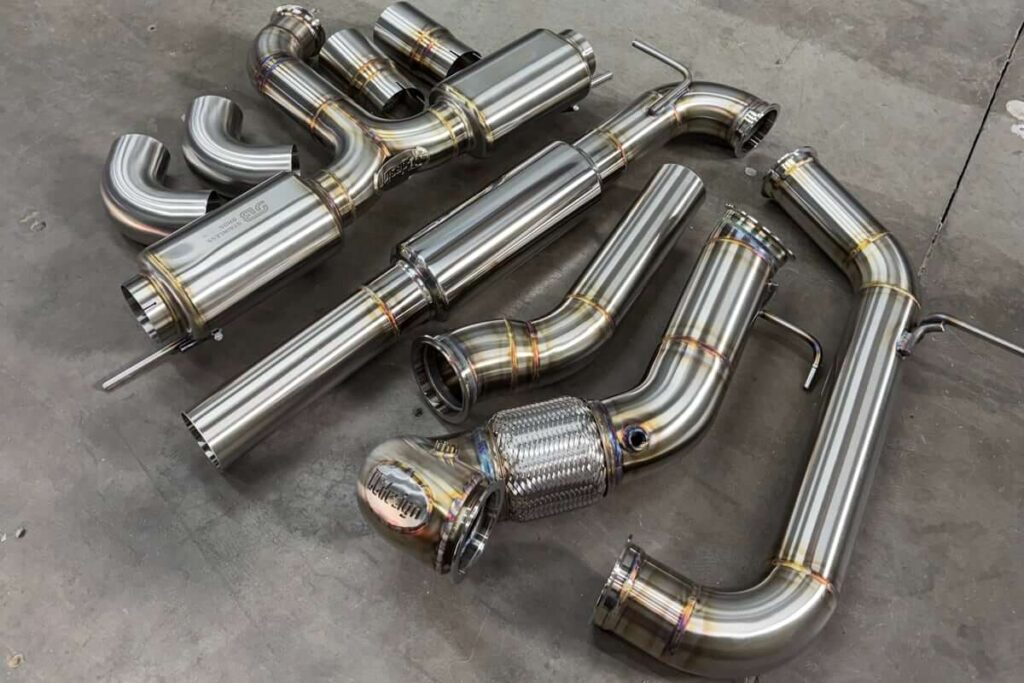
I settled on a 4″ downpipe based on the fact that pipes with a larger diameter produce lower air velocity, which is a primary factor contributing to pressure losses (backpressure) in the exhaust. Whether or not the difference is of practical significance to the functioning of the turbocharger and engine on the Mk7 is unknown, but with 4″, 3.5″, and 3″ options available, the largest was what I was interested in.
Currently, the GTI is equipped with a Shuenk IS48 turbocharger, an IS38 alternative that has made around 450 whp on E40 and holds around 30 psi, but I have used substantially larger turbos, such as the Mabotech M720, which made close to 600 whp, and not knowing what turbos I might install in the future, having the larger downpipe gives me confidence that the exhaust setup will not limit the turbocharger.
GESI cat option:
I also checked with CC Design about a future purchase of a GESi catted downpipe that is also 4″, and this is an option. For testing, I prefer the catless downpipe, but for daily driving, the catted downpipe is preferred.
The Baun Performance downpipe I have been using up to now was 4″ with a GESI cat, but Baun Performance does not offer a catless downpipe, which was part of the motivation for making a wholesale exhaust swap.
CC Design Midpipe:
In the 3.5″ midpipe segment, there is a Vibrant resonator. Eliminating the drone from the exhaust was a high priority.
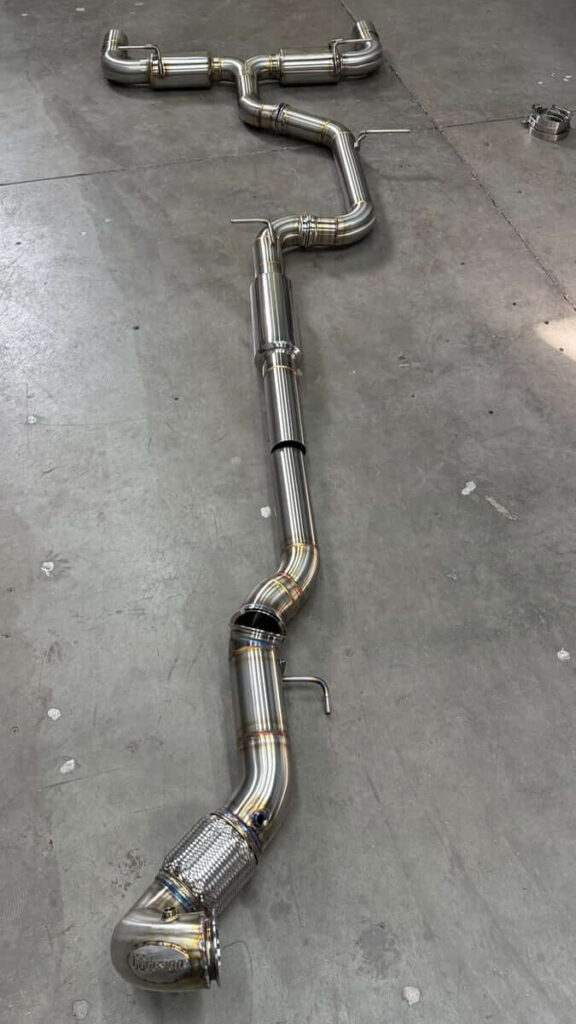
I’m comfortable with a 3.5″ midpipe after the 4″ downpipe, since there’s significant exhaust gas cooling as the gases exit the turbocharger turbine and travel downstream in the downpipe. This cooling reduces the gas volume, lowering the volumetric flow rate and, in turn, the exhaust gas velocity. The lower gas velocity reduces pressure loss, which should offset the 0.5″ reduction in pipe diameter to some extent.
There’s also consideration for fitting the piping in the available space, something I presume is easier with a 3.5″ exhaust than a 4″.
CC Design Exhaust Section:
Then, in the exhaust section, there are two mufflers. I prefer a subdued sound from the car, and hopefully the pair of mufflers will achieve it.
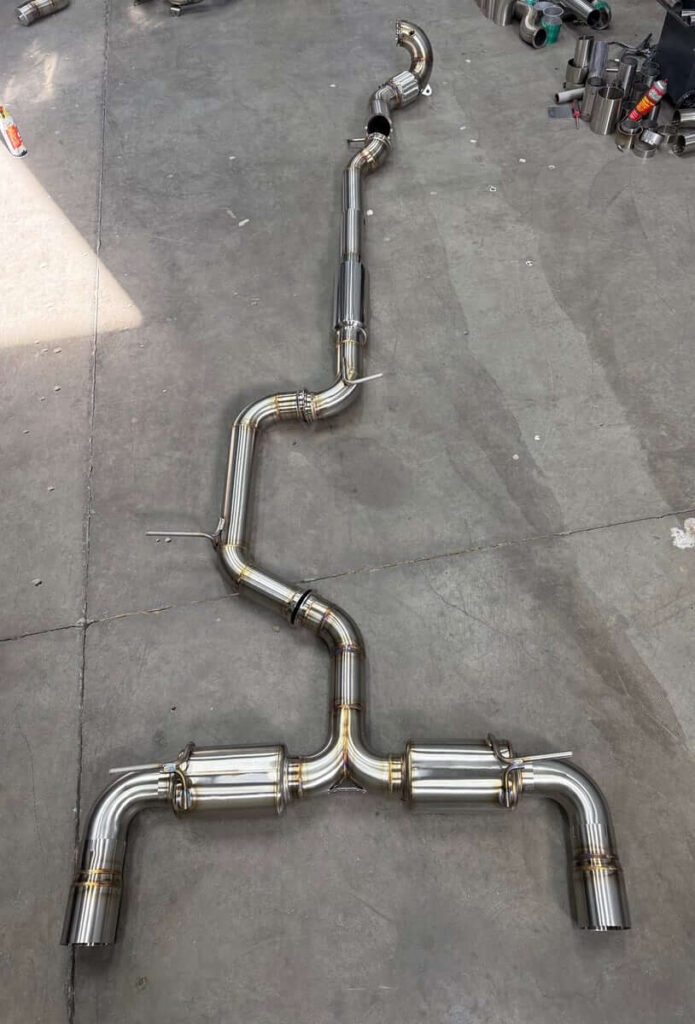
Again, with an eye towards performance, any disruptions to airflow caused by the mufflers should be reduced by using one in each airstream after the divergence, since half of the airflow will pass through each muffler, lowering the volumetric flow rate through each muffler.
The muffler section maintains the 3.5″ pipe diameter when the single pipe diverges into two pipes.
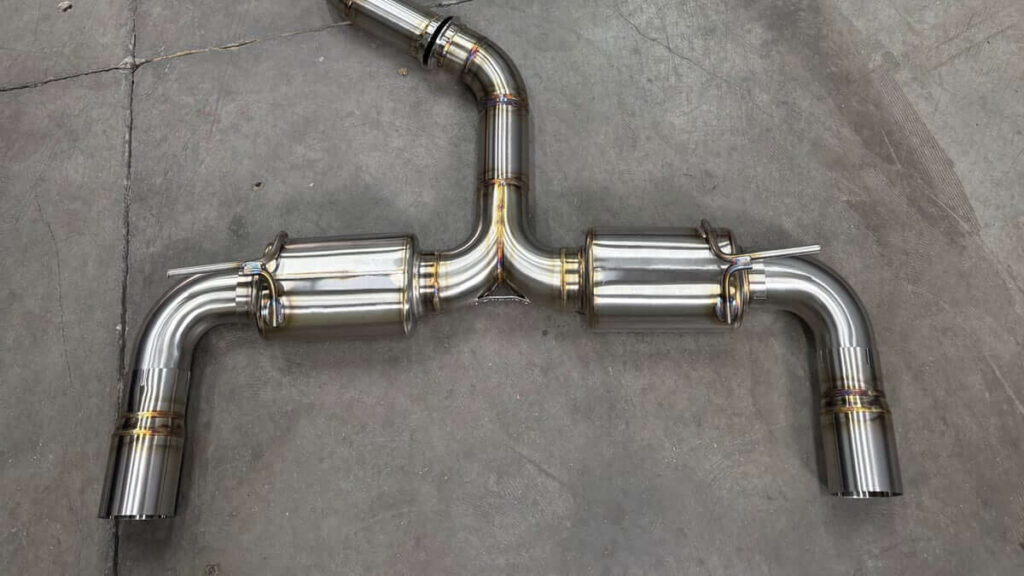
The 3.5″ diameter is maintained all the way through to the exhaust tips, which have a slant cut.
More customizing:
Another request I had with this exhaust is an oxygen sensor bung a couple of inches downstream from where the turbine housing attaches to the downpipe. The purpose is to allow measuring exhaust gas temperature and exhaust system back pressure with appropriate sensors that fit an O2 bung.
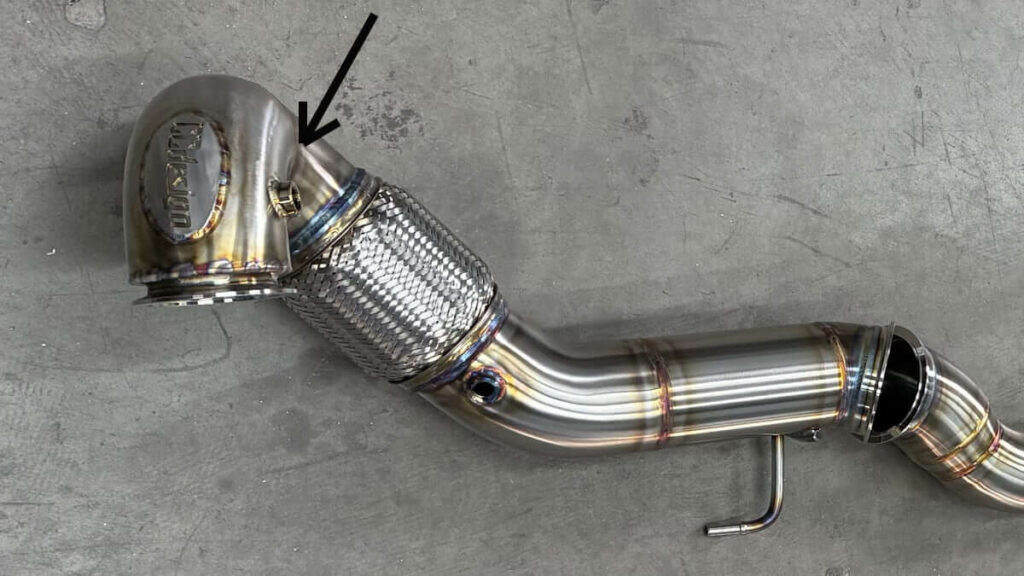
Next:
At the time of writing this post, the parts were en route to my location.
Removal of my current exhaust and switching to the CC Design is anticipated in the next couple of weeks.
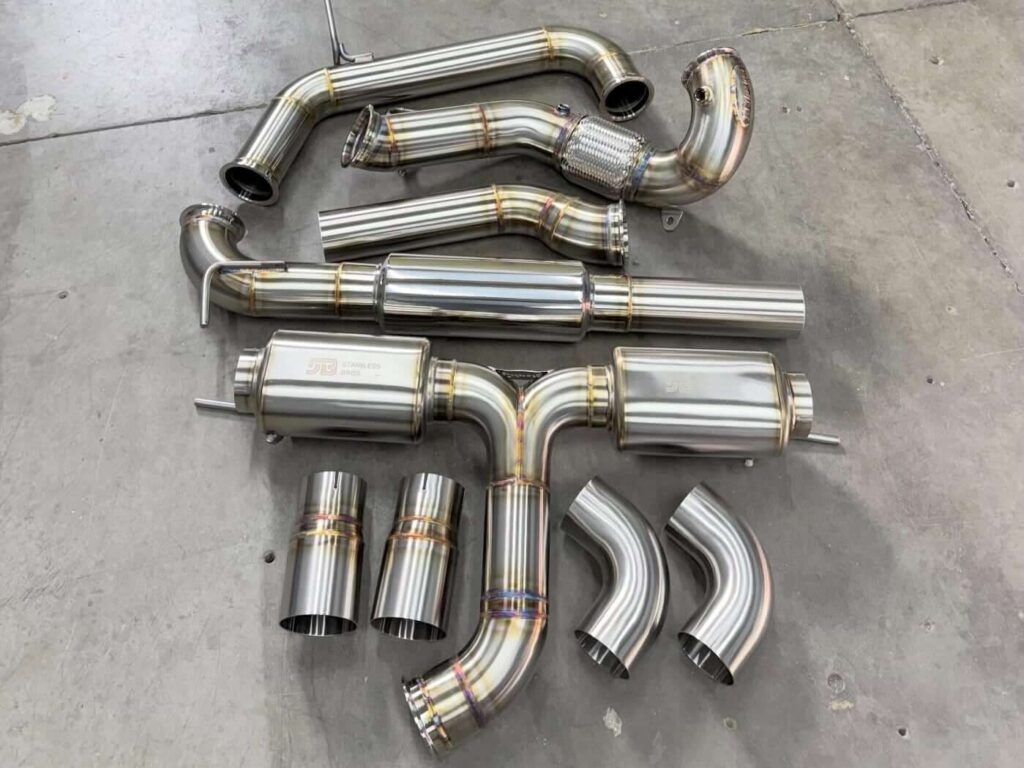
References:

